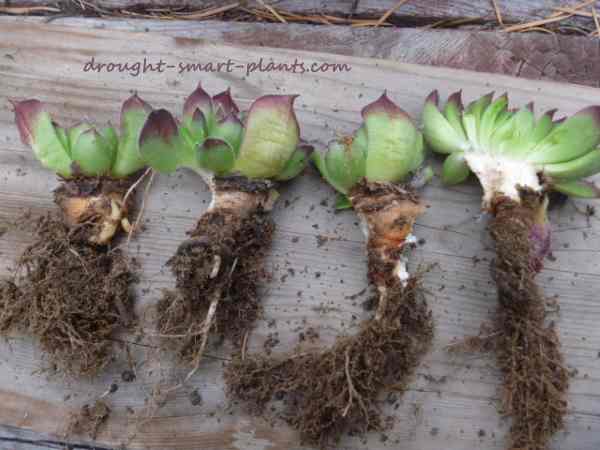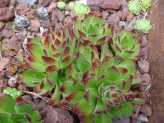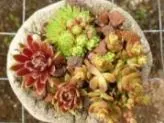A Unique and Different Type of Succulent
The ‘Huffies’ as they’re called, or Jovibarba heuffelii, are so different in the way they grow that it’s worth finding out more about propagating them.

Unlike some of the other Jovibarba species, huffies grow in a cluster of crowns, sometimes getting quite large.
The fact that the roots are very fleshy and thick makes the clump rise up off the ground, and because of the size of the roots (and the fact that they grow much like a carrot) they need deeper soil than most other types of succulents which have fine fibrous root systems.

The colors of Jovibarba heuffelii are rich and intense; reds, maroons, purple, aquamarine blue and some even come in a golden yellow.
They are unique in the hardy succulent world – I’ve been amazed at how tough they are, withstanding very cold and snowy winters with ease. Even getting completely immersed in water and then frozen, something that will kill off many other types of even supposedly hardy succulents doesn’t faze them.

Here’s the way to propagate them. It’s a different method than any other of the similar kinds of plants, because they don’t produce chicks or pups like their cousins, Sempervivum or other Jovibarba species.

The roots are soft like a carrot that’s been in storage too long; kind of rubbery. Start making the cut between two of the crowns with a sharp pointed knife, then tear it the rest of the way by hand.

Each of these sections will make a whole new plant. In time, say two to three years from this surgical procedure, they too will start to split.
This lovely specimen of Jovibarba heuffelii is in need of separating – when they overflow the edges of their pot and fill the soil with roots, it’s time.

The varieties of Jovibarba heuffelii, to maintain their characteristics, have to be propagated this way – by seed, they lose their traits, and you get a whole different hybrid.

Once the big tap root fills the pot and reaches the bottom of it, that’s when the crowns start to separate.
You can leave them to form a colony if you like, but if you want more of this variety, you have to split the crown.

Use a sharp knife or razor to get the cut started, then pull them apart the rest of the way. This allows the cut to follow the cells and not cut through them, minimizing damage where rot can form.

Each new plant should be potted into DRY soil (don’t water them) and left to callous. In a week or so, water thoroughly when bone dry. These plants are hardy and should be left outdoors all winter.










